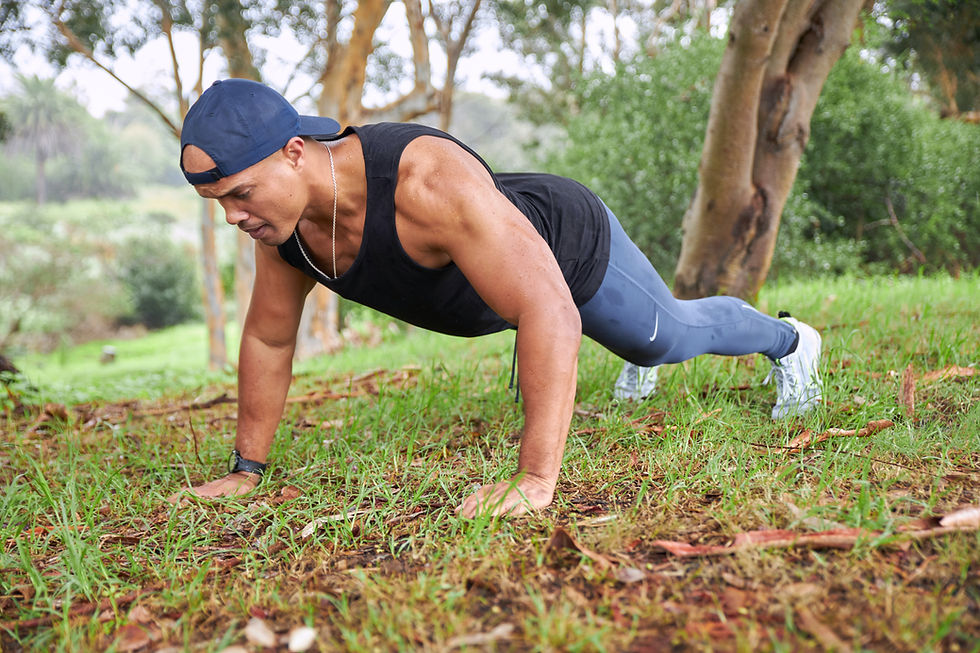Biomechanical Analysis of the Eagle Push-Up
- Champions Certifications
- Aug 20, 2024
- 2 min read
Inspired by the wingspan of an eagle, the eagle push-up is an advanced variation of the traditional push-up that strengthens the primary push-up muscles and targets the upper back and scapular muscles. This blog will cover the muscles involved, proper execution, modifications, and common mistakes to avoid.
Muscles Involved
The primary muscles engaged during the push-up component of this exercise include the pectoralis major, triceps brachii, and the anterior deltoid. This push-up variation adds back emphasis during the eagle portion of the push-up. The muscles involved in this portion are the posterior deltoid and the muscles surrounding the scapula in the upper back.

Execution of the Eagle Push-Up
To perform Eagle push-ups, you need to begin in a standard push-up position. Place your hands on the ground slightly wider than shoulder-width apart and extend your legs behind you. Ensure your back is flat and your abs and glutes are engaged for stability. Lower yourself in a controlled manner until your chest touches the ground. Once on the ground, spread your arms to the side, making a “T” position. The palms should be facing down. Raise your arms off the floor, squeezing your scapula together. Lower the arms, return your hands to the push-up position, and push up to the starting position.
Modifications
If the eagle push-up is too challenging, master a standard push-up. You can also modify the exercise by performing the push-up portion on the knees instead of the toes and performing the eagle portion as described above.
Common Mistakes
Poor form reduces effectiveness and increases injury risk. Below are some important things to look out for when performing the eagle push-up:
Hip Sagging occurs when the core is disengaged and can cause unnecessary strain on the lower back, leading to pain and injuries. To fix this, ensure the legs are active, the hips are slightly tucked, the core is contracted, and the shoulders are down and back. This position will ensure that the body is fully engaged.
Low Back Arch: This can cause strain or compression in the lower back, leading to pain. To fix this, slightly tuck the hips to keep a neutral spine and engage the deep core muscles.
Elevated Butt: This makes the exercise easier as it removes focus from our target muscles, specifically the core. To fix this, ensure that the shoulders remain positioned over the hands and the hips stay slightly tucked. In this position, it is harder for the butt to rise into the air.
In conclusion, the eagle push-up is an advanced exercise that strengthens the foundational muscles involved in a push-up and targets muscles of the upper back and scapula region. If you want a challenge or a little variety in your workout, the eagle push-up can be a great addition to your routine.








Comments